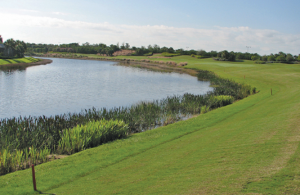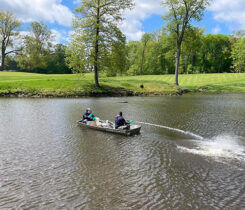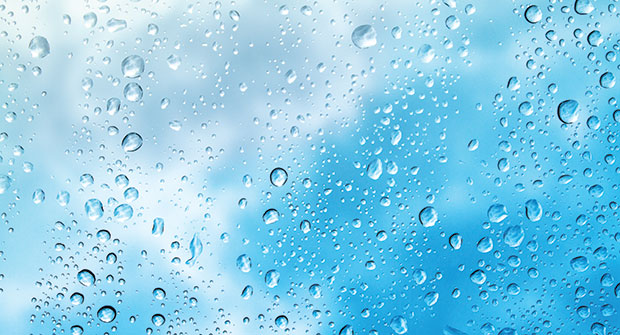Best practices for water management on golf courses

Vegetated littoral zones improve water quality and creates attractive features. (Photo: Todd Lowe)
Lakes and ponds are golf course features that provide strategic value, aesthetics and habitat for wildlife. While some golf course ponds are natural, many are man-made to capture and filter runoff from surrounding communities before entering the local watershed.
The design and purpose of a water feature influence management. Irrigation ponds provide maximum storage capacity, and their banks are steeper and more uniform.
Multipurpose ponds may retain stormwater, provide secondary water storage, create water hazards and provide habitat. Multipurpose ponds often vary in depth and may include large littoral shelves extending outward from the banks.
Todd Lowe, a former USGA Green Section agronomist, provides some management suggestions in his article “Littorally Speaking.”
The lake’s littoral zone is the shallow area nearest the shore, where enough sunlight penetrates the water to provide aquatic plants with adequate light for photosynthesis. Littoral zones are only a few feet deep and extend several feet from shore, but they play an essential role in a lake or pond’s long-term health and water quality.
Jim Skorulski, while with the Green Section, wrote an article titled “Golf Course Water Features Need Management.” He recommends reducing nutrients or nutrient inactivation to help manage algae blooms.
Pond ecology includes bacteria, algae, plants, insects, amphibians, crustaceans, fish and mammals. Algae is an abundant organism in the pond ecosystem and is often challenging to manage. Algae can be found in all freshwater and saltwater systems and are nearly undetectable until they multiply and bloom, which becomes a problem.
Reducing nutrients can be achieved by vegetative buffers, careful fertilizer applications around water features, eliminating direct stormwater inputs, keeping grass clippings out and managing waterfowl. Nutrient inactivation uses alum to suspend phosphorous or Phoslock, a lanthanum-modified clay that binds to phosphorous.
Pond depth beyond littoral shelves should be a minimum of 6 feet, with a depth of 8 feet preferred. The deeper depth will shade out emergent plants in those areas, and temperature stratification will occur in deeper areas, which can help suppress algae.

Photo: Mike Kenna, Ph. D.
Mike Kenna, Ph.D., is the retired director of research, USGA Green Section. Contact him at mpkenna@gmail.com.












